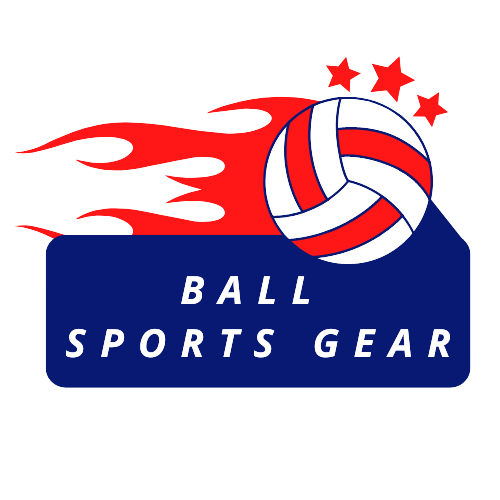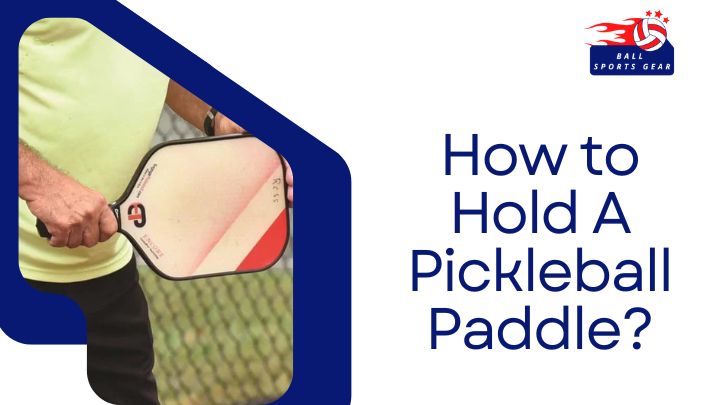It seems simple. Pickleball paddles are easy to hold, so what’s the problem? Well, it’s about something other than how hard it is to have the paddle. It’s about how to hold a pickleball paddle correctly can give you a much better start in Pickleball. Getting these fundamentals of Pickleball right is essential because bad habits will be much harder to fix later. So let’s get a good start! This article aims to demonstrate how to hold a pickleball paddle correctly and where to have it.
I’ll also show you how to keep the paddle during specific situations. Let’s begin by grabbing a paddle and a ball. As I’m talking about the different ways to hold your paddle, try them out and see what you think. Also, if you’re a lefty, flip everything around, and it will work the same. Enough chit-chat; let’s do this!
The Best Ways to Hold a Pickleball Paddle
It is common for Pickleball rallies to be played at the Non-Volley Zone line in fast hands battles with the Pickleball flying back and forth over the net. These quick exchanges mean you must make split-second decisions and have lightning-fast reactions to win the game.
Due to the short time available to react to a pickleball at the Non-Volley Zone line on a pickleball court, you must move as efficiently as possible. You can be more efficient by starting from the best possible position to eliminate wasted movement from your starting point to your point of contact with the Pickleball. The general goal is to have the most excellent coverage of shots (by staying on the pickleball court) in the shortest amount of time possible.
So, in this pickleball blog, I’ll break down the best position for your pickleball paddle, so you can hold your pickleball paddle like a pro and win more hand battles on the pickleball court.
The Different Types of Grip
Holding a pickleball paddle is the most critical skill to learn, aside from learning the pickleball rules. If you need to know how to grip a pickleball paddle, you’ll find that your hits are inconsistent, which means you’ll often be hitting the ball out of bounds. You’ll need to know about several grip styles when holding a paddle. But for the better grip you have proper pickleball paddle for your self and for that you can visit how to choose a good pickleball paddle.
The Eastern Grip – The “Shake Hands” Grip
Combined with the Continental and Western grip, this grip is likely to be your favorite when you begin playing Pickleball. In addition, if you are more focused on your forehand – and many Pickleball players play more forehands than backhands, this is a good grip. You get power and spin, a paddle that is easy to control, and a paddle where you can easily place the ball pretty cleverly too.
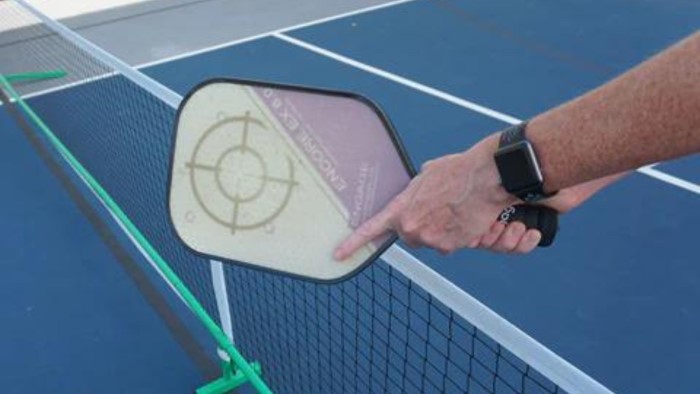
In this video, the pro player Steve Paranto identifies the various Pickleball grips and will make it more transparent for you, which hold you prefer. Remember, there is no right or wrong grip with Pickleball. Use the grip that works for you and gives you more freedom with your game.
The Western Grip – The “Frying Pan” Grip
If you have little paddle ball sports experience, you instinctively gravitate towards this type of grip. To use this style of grip, you need to grab the paddle so that it is pointing toward the net. As such, it resembles a flyswatter. This is also precisely the way that you would use the ball with this grip, too. This makes it an excellent option for forehand strokes, as the paddle would be out of position for any backhands.
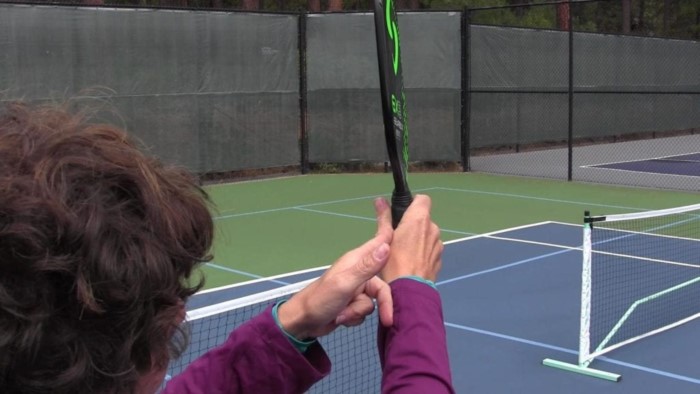
This grip has two different variations, which include the Western and Semi-Western grip. The difference between these two variations is very slight but still distinguishable. A person using the western grip will have their forefinger on the bottom of the handle, while someone using a semi-western grip needs to keep it higher on the hold.
The Continental Grip
Considering that it does not require you to change the position of your hand, the continental grip is an excellent grip for hitting forehands or backhands, dinking, or smashing the ball. You need to adjust the angle of how you hold the paddle.
Professionals and seasoned players generally agree that this grip is the best for most players. It’s not to say that some of the best players don’t use the other grips because they are, but the continental is most widely used among pickleball players.
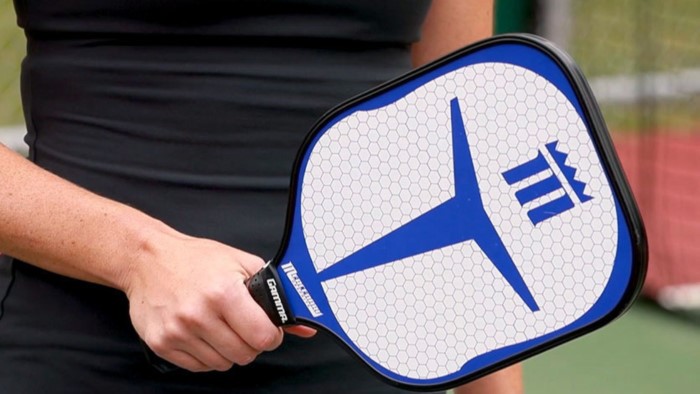
With minor adjustments to the angle of your hand, depending on the shot you want to make, the continental grip is an excellent choice for most paddle shots.
Three slightly different variations of this pickleball paddle grip will work with various shots. These grip variations are:
- Neutral grip
- Strong grip
- Weak grip
The images below show these three slight variations in the continental grip. Remember that you aren’t changing your grip but making it smaller using minor adjustments, which are most likely instinctive and happen naturally.
A Pickleball Court’s Ideal Paddle Height
Pickleball paddle-ready position also involves the height at which you hold your paddle, which should be discussed more. Professional pickleball players have been dropping the paddle height to about your belly button (instead of the “traditional” paddle height of about your chest).
Holding the paddle at chest level, anything above the head will likely go out of bounds. As a result, you do not need to move your paddle upward from this ready position because you do not need to hit your opponents’ shots that travel outside the court. However, you would have to move your paddle downward if you wanted to cover up any images that your opponents may have (which would take more time). Generally, it would be best if you moved your paddle down, but not up, so you are starting from a less paddle-ready position, and it may take longer to attack or defend shots at or below your chest.
Contrast chest height for the paddle-ready position with a bit lower paddle position—around your belly button. You have an equal distance to travel to go up for a high shot and down for a low shot. As a result, you can have the most excellent coverage of photos (staying in the pickleball court) in the least amount of time possible.
Where to Hold the Paddle
If you’re a new player, you’ve been reminded to get into your ready position by other players. Your coach probably told you not to stand there waiting for your opponent’s serve to fly over the net into your unprepared side of the court with your arms and paddle by your side.
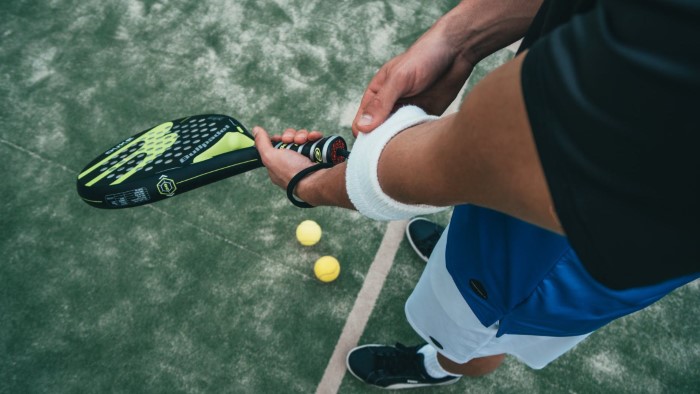
It’s vital to figure out which ready position is the best fit for you. You can get a lot of advice from various professionals, so it’s worth trying different prepared places and then deciding which works best for you. In general, 12 o’clock and 9 o’clock are discussed as ready positions.
I’ve never found the midnight position comfortable, so it’s just not a position I’ve used regularly. And the 9 o’clock ready place never felt comfortable to me. At 10 o’clock, I’ve instinctively settled in. It seems natural and comfortable, and I’ve succeeded with both forehand and backhand ball returns.
It’s also common for players to place their opposite hand on the edge of the paddle, which means they hold the paddle with one hand while the other hand rests gently on the edge of the paddle. This is because some players find that it helps them stay balanced and connected to their paddles.
The 10 o’clock ready position and holding my paddle by the edge are things I like to do. I recently encountered this video from Simone Jardim. She discusses the inclined position in the video and what works best for her and her clients. She uses the ready place at 10 o’clock. Please take a moment to look at this and let me know your thoughts. If you have more confusion about that just visit what pickleball paddles do pros use and you can also check How to Make a Pickleball Paddle
FAQs
The pickleball overgrip is a tape that wraps around the paddle’s handle. The purpose of the video is to either make the handle more extensive, provide a more comfortable grip, or absorb sweat, thereby preventing the paddle from slipping. A new overgrip can be used instead of getting a new hold.
The index finger test is one way to pick a pickleball grip size. Keep your hand open and flat, and measure the distance from the horizontal bottom crease on your palm to the tip of your ring finger. This distance will help you decide what pickleball grip size is right for you.
Typically, a weak grip is when you hold the paddle with your wrist turned and use it for most shots, including backhand shots, but not forehand shots.
While holding a pickleball paddle, you should ensure that it does not fall out of your hand when you hit a shot. Having a pickleball paddle loosely will help ensure that your hand and arm are not under too much stress while allowing you to easily change paddle position and grip when needed.
Conclusion
As you can see, a lot goes into the game of Pickleball. While it is an enjoyable game, you will have to know how to hold a pickleball paddle if you want to find any success while playing. Otherwise, you will need help getting into the game and scoring points.
